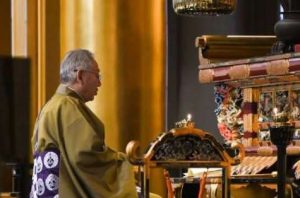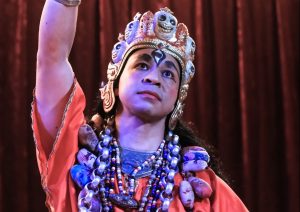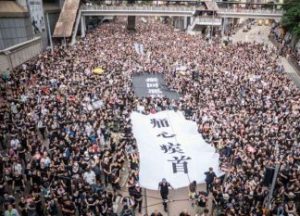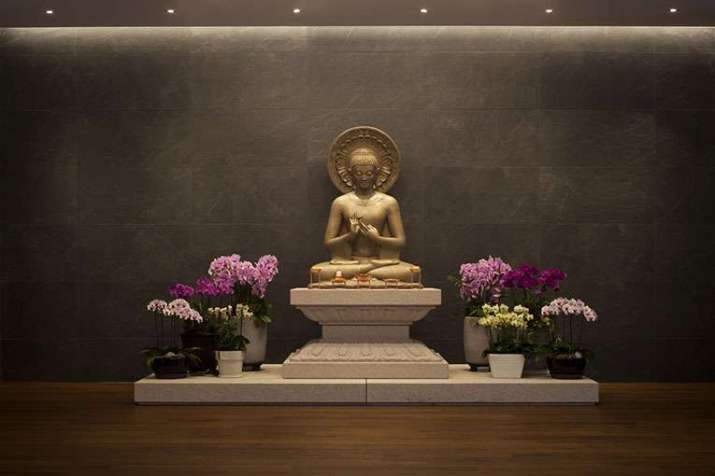
A newly completed Buddhist monastery in South Korea is aimed at offering a place of residence and retreat for Buddhist monastics and lay practitioners that expresses the principles and values of the Dharma; an architectural embodiment of the Buddhist teachings expressed for modern times, built using 300,000 individual bricks.
Completed earlier this year, Jetavana Seon Center, located among the mountains near the town of Gangchon in the northeastern Korean province of Gangwon, is the work of Seoul-based architectural firm studio_GAON. The temple forms part of a larger complex that serves as a center for Korean Seon (Zen) Buddhism, composed of separate buildings that include accommodation for meditation and ascetic retreats modeled after the concept of the kuti, a Pali terms that refers to the simple, spartan hut or dwelling that Buddhist monks would traditionally build for themselves when residing at a particular location for a period of time.
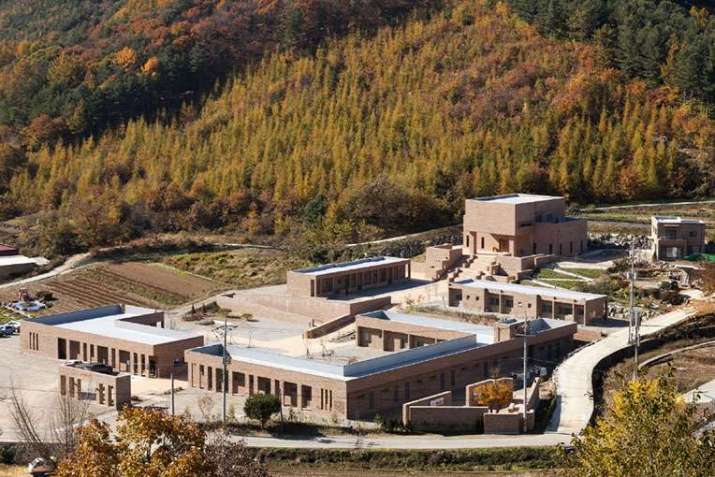
The design of the center divides the various functions into separate structures, all of which share a common design aesthetic that embraces the idea of Buddhist architecture, linked together by numerous pathways that are intended to express the transition from one state of being to another as a process of development.
The main buildings are formed from concrete and clad in uniform and minimalistic rows of red brick from Pakistan, an aesthetic choice intended to directly communicate the ascetic philosophy of Buddhist monastics and retreatants, and as a direct reference to appearance of the original Jetavana monastery in the modern-day Indian state of Uttar Pradesh.
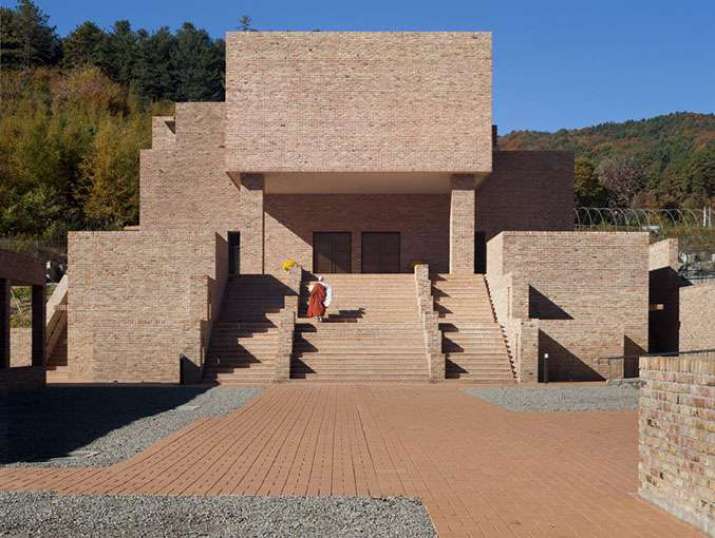
The layout of the complex conforms harmoniously with the site’s mountainous topography, in which elevated sections are incorporated to express a sense of hierarchy. The main temple building, private accommodation for retreatants, residential buildings for monastics, retreat center, and administrative offices have all been deliberately positioned in order of relative importance, providing a tranquil, contemplative meditation sanctuary amid the beauty of the mountains.
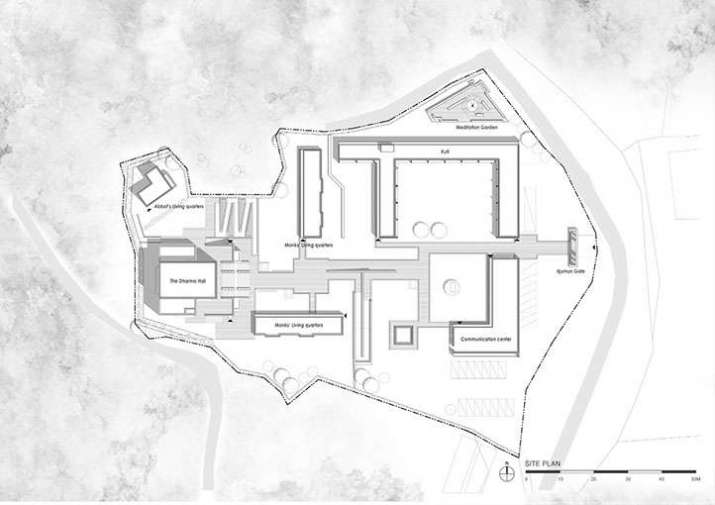
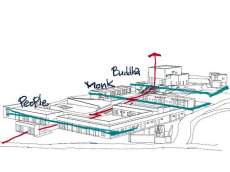
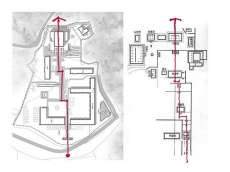
The lead architect for studio_GAON on the project, Hyoungnam Lim, explained:
Two years ago, a monk with a slender body and an intelligent look, came to our office. With very concise and neat remarks, he told us that he was planning to build a Buddhist temple named ‘Jetavana Seon (Zen) Center’. The design of temple for meditation and asceticism had already begun on the opposite mountain, and he was looking for an architect to design a facility called ‘Kuti’ (private accommodation meaning ‘cabin’) that will be separately built for believers to stay. One afternoon in May, the cool conversation, like a cool early autumn breeze, adding here and there a clumsy story about Buddhism that I knew a little bit, came to an end with his saying “So where do I sign to entrust the design?”
Strictly speaking, I am not a Buddhist. But I think that the basic spirit of all religions have something in common. I have a very ignorant and brave idea that the form of religion has changed only because of the historical situation and the various circumstances of the time when the religion was settled. In addition, since I am an architect, I am familiar with old houses including temples, high-class traditional Korean houses, and folk-houses. So I have to confess that I have a bit of old-fashioned view of architecture. I believe that building a temple was making a space that forms a process of going through the order, from Iljumun Gate (One Pillar Gate) and Cheonwang Gate (the temple gate dedicated to the Four Deva) to Bosaldan and Sinjungdan, and this is what I told monk on our first meeting, which formed the starting point for the work. (studio_GAON)
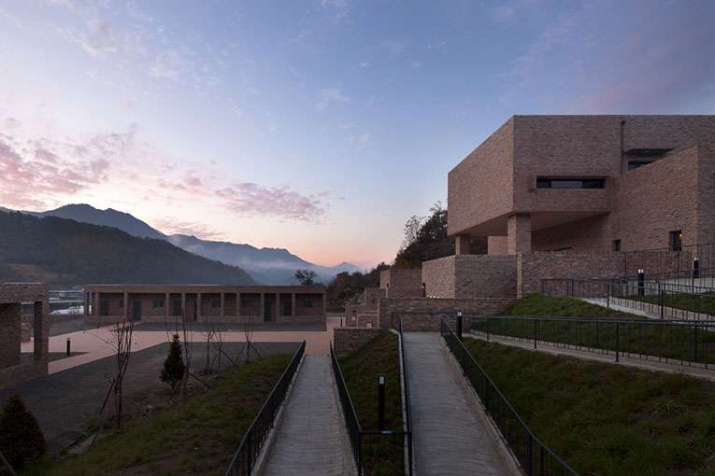
The complex is named after Jetavana, one of the most famous Buddhist monasteries in India. Located near the old city of Savatthi in Uttar Pradesh, Jetavana was the second vihara, or monastery, donated to Shakyamuni Buddha, given to him by the wealthy merchant Anathapindika, the Buddha’s chief male lay disciple and his greatest patron. It is renowned as the place where the Buddha gave the majority of his teachings and discourses.
According to data from the 2015 national census, the majority of South Korea’s population—56.1 per cent—holds no religious affiliation. Christians make up the largest religious segment of the population at 27.6 per cent, while Buddhists account for 15.5 per cent.
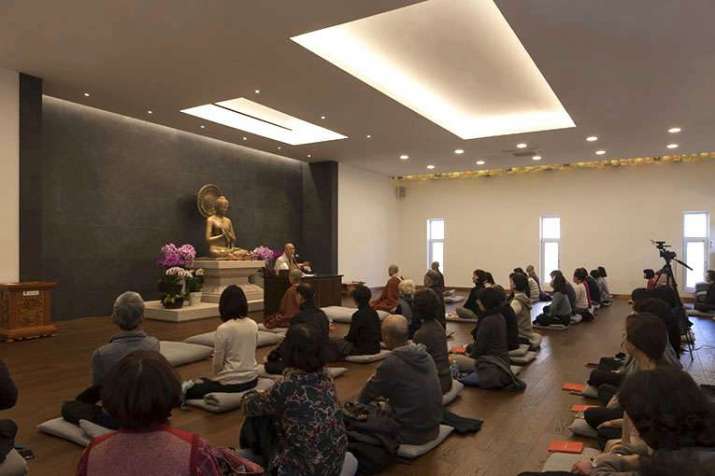
See more
studio_GAON uses 300,000 bricks to construct the jetavana buddhist temple in south korea (designboom)
한국의 ‘기원정사’ 제따와나 선원 개원 (BTN 뉴스)
한국의 ‘기원정사’ 제따와나 선원 새롭게 문 연다 (불교신문)
강촌 제따와나 선원/Jetavana Temple in Ganchan (studio_GAON)








